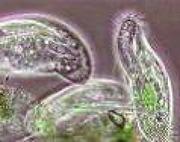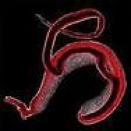Call for a Free Estimate
437-239-6084
Health Hazards associated with bird droppings

Like all fecal matter (human and animal) pigeon droppings can contain bacteria that are harmful if ingested, so it is best to keep pigeon droppings away from food that is about to be eaten and from kitchen work surfaces.
The fungus Histoplasma Capsulatum, if inhaled, can cause Histoplasmosis in humans. This isn't likely to happen in Canada because the fungus has not been found in our soil. Pigeons don't carry or spread Histoplasma, it is not a disease that can be caught from a bird but under the right conditions (temperate climate, damp acidic soil with high organic content) all bird droppings can produce an environment in which this fungus thrives if it is there in the first place.
Cryptococcus Neoformans is another fungus that is found in the dried droppings of birds, including pigeons. When dried bird droppings are stirred up, this can make dust containing Cryptococcus Neoformans go into the air. If inhaled this doesn't normally affect healthy humans but it can cause disease in people with compromised immune systems, such as those with HIV/AIDS, people who have had organ transplants and those who are being treated for cancer.
Where Do Pigeons Come From
Feral pigeons (Columba livia), also called city doves, city pigeons, or street pigeons, are derived from domestic pigeons that have returned to the wild.
The domestic pigeon was originally bred from the wild Rock Dove, which naturally inhabits sea-cliffs and mountains. Rock (i.e., 'wild'), domestic, and feral pigeons are all the same species and will readily interbreed. Feral pigeons find the ledges of buildings to be a substitute for sea cliffs, have become adapted to urban life, and are abundant in towns and cities throughout much of the world.



Pigeons were first domesticated around 4500 B.C. from stock inhabiting the sea cliffs of the Mediterranean. Since then, nearly 150 varieties have been developed, some for meat, some for fashion, and some for racing. The now extinct passenger pigeon (Columba migratoria), originally from the eastern United States, is a different species.
Pigeons originally lived in high places—cliffs, ledges, and caves near the sea—that provided them with safety. Over time they have adapted to roosting and nesting on windowsills, roofs, eaves, steeples, and other man-made structures.
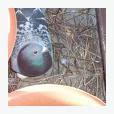
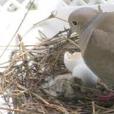
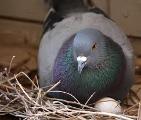
Nesting and Roosting Sites
- Nesting and roosting sites are protected from the elements and are situated on houses, barns, stadiums, and grain elevators, as well as bridges, wharfs, and cliffs.
- Nests in continual use become solid with droppings, feathers, and other debris.
What pigeons carry
Pigeons carry mycotic, (airborne) diseases. They carry bacterial, and protozoan diseases. They carry various worms which live in their feces.
Mycotic
Aspergillosis is probably the most well known air borne disease.
It is caused by a fungi which lives saprophytically in pigeon feces.
You don't have to touch the feces. Breathing it in is enough.
This disease poisons the victim’s blood. It causes death.
Fungus
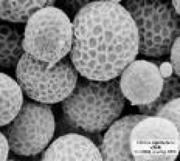
Cryptococcosis infects the brain.
It is caused by a yeast carried in the intestinal tract of pigeons and deposited in their feces. As pigeon coops are full of this yeast, inhalationis likely.
Histoplasmosis is so powerful, and so difficult to detect it was once considered as a biological warfare agent. It is a pulmonary disease but extends to the liver, lymph nodes, and spleen.
The organism may disseminate to the blood and bone marrow and is fatal.
Of all the disease this one is most often mistaken for ‘flu’ and treated as such.
This is why so many people die of it.
Bacteria
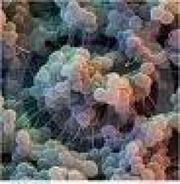
Bacterial
Erysipeloid most often starts with a cut.
You don't know where you got the cut. It hurts.
You have the sensation of burning, throbbing pain, and intense itching. You treat it with whatever you have at home. It does not get better.
Listeriosis is especially dangerous for pregnant women.
It may cause abortions, premature delivery, stillbirths, and death.
Again, one attributes the results to other causes, not to pigeons.
Pasteurella multicida is spread via pigeon droppings or their nasal discharge. The organism can live a month in pigeon manure or three months in a dead pigeon.
Even dead pigeons carry diseases, so dispose of them as haz mat.
Salmonellosis is more than food poisoning. Gastroenteritis is the most common manifestation. Pigeons spread salmonellae as the bacteria are left wherever the pigeons defecate. As pigeons walk back and forth through their mess, they carry the bacteria on their feet.
Many people, especially children get gastoenteritis and do not connect the fact that there were pigeons in the sandbox, perching on those bars the child was touching.
One of the scariest is Yersiniosis. It is a plague-like disease and
indistinguishable from appendicitis. Many unnecessary appendectomies are performed. A perfectly healthy appendix is removed, and the patient doesn't get better.
This disease can be transmitted by pigeon feces, their eggs, or their ticks.
Chlamydiosis is another disease which imitates the flu.
There is a respiratory infection with high fever, severe headache, and generalized aches and pains.
The disease can be transmitted by infected ticks, ingestion, or by inhalation of dust contaminated with the organism.
Paracitic
There are parasitic worms which live in Pigeon feces.
Schistosomiasis, one of the most prevalent diseases throughout the world, is caused by a water-borne trematode and pigeons are responsible.
Called bilharzia, bilharziosis or snail fever, although having a low mortality rate, schistosomiasis often is a chronic illness that can damage internal organs and, in children, impair growth and cognitive development.
It is the second most socioeconomically devastating parasitic disease after malaria. Pigeons eat the snails that carry this disease and bring it from one body of water to another.
Construction Dust and Animal Feces Can Kill Humans
WHAT DOES CONSTRUCTION DUST DO TO YOU, ME AND YOUR ANIMAL?
Breathing in constructions dust can cause you to have illnesses such as
* lung cancer * silicosis * Chronic Obstructive Pulmonary Disorder (see also Chronic obstructive pulmonary disease (COPD)[3] )
* asthma (see also the Asthma site)
Irritant dust that settles in the nose may lead to rhinitis, an inflammation of the mucous membrane
Dust that gets in past our bodies defence system builds up in the sacs which our body uses to breath in oxygen and out carbondioxide. If too much dust builds up in there it can damage our lungs. The particles which cause fibrosis or scarring are called fibrogenic. When fibrosis is caused by crystalline silica, the condition is called silicosis
Some types of lung diseases caused by the inhalation of dust are called by the general term "pneumoconiosis." This simply means "dusty lung."
Some particles dissolve in the bloodstream. The blood then carries the substance around the body where it may affect the brain, kidneys and other organs.
The table below summarizes some of the most common lung diseases caused by dust.
The OSH Answers document Extrinsic Allergic Alveolitis has more information about diseases from exposure to organic dusts.
Table | ||
Inorganic Dust | Type of Disease | Lung Reaction |
Asbestos | Asbestosis | Fibrosis |
Silica (Quartz) | Silicosis | Fibrosis |
Coal | Coal Pneumoconiosis | Fibrosis |
Beryllium | Fibrosis | |
Tungsten Carbide | Hard Metal Disease | Fibrosis |
Iron | Siderosis | No Fibrosis |
Tin | Stannosis | No Fibrosis |
Barium | Baritosis | No Fibrosis |
Organic Dust |
| |
Mouldy hay, straw and grain | Fibrosis | |
Droppings and feathers | Bird fancier's lung | Fibrosis |
Mouldy sugar can | Bagassosis | Fibrosis |
Compose dust | Mushroom worker's lung | No Fibrosis |
Dust or mist | Humidifier fever | No Fibrosis |
Dust of heat-treated sludge | Sewage sludge disease | No Fibrosis |
Mould dust | Cheese washers' lung | No Fibrosis |
Dust of dander, hair particles and dried urine of rats | Animal handlers' lung | No Fibrosis |
This information and more can be found on the link below
WHAT CAN DOG AND CAT URINE OR FECES DO TO HUMANS?
Hidden Dangers of Cat Feces
Cat feces are particularly known to be responsible for many fatal diseases including Toxoplasmosis and Escherichia Coli bacterial infection
Cat urine is also harmful to humans. If cat urine is allowed to sit for long hours without cleaning, it can emit ammonia which could lead to severe allergic reactions in humans. Typical symptoms of cat urine allergy include: red eyes, itchiness of the skin, nose etc, sneezing, headaches, dizziness, nausea, vomiting, coughing etc. Highly concentrated ammonia in cat urine can also cause dangerous diseases like pneumonia and bronchitis. Kids are at a greater risk from these infections owing to lower immunity and body weight ratio compared to adults.
https://weaddup.com/blogs/news/68678723-hidden-dangers-of-cat-feces-and-ways-to-prevent-them

Campylobacter jejuni
It may look like spiral-shaped macaroni, but you do not want to eat this microbe. Campylobacter jejuni is one of the most common causes of food poisoning. (You know the symptoms.) Though it's commonly spread through improperly cooked meats, C. jejuni is also present in the feces of cats and dogs, where it can spread to humans. Prevention: Wash your hands before eating.
Brucella canis
This bacteria, which causes miscarriages and stillbirths in dogs, is spread through vaginal secretions, urine, and potentially saliva. In humans, B. canis can cause fever, fatigue, and weight loss, as well as swelling of the liver, spleen, and lymph nodes. The disease is rare in humans, but probably underdiagnosed. Prevention: Wash your hands after touching your pet.


Leptospira interrogans
This spiral-shaped bacteria, which resides in the urine of various pets, can corkscrew its way through your skin and into the bloodstream. From there, L. interrogans causes fever, vomiting, and diarrhea. If left untreated, the infection can lead to kidney damage, meningitis, liver failure, and even death. Prevention: Avoid the urine of cats, dogs, and rodents. Do not swim in water that may have been peed in by these animals
Toxoplasma gondii
According to the CDC, more than 60 million people in the United States may be infected with the Toxoplasma parasite, which is spread through cat feces (as well as soil and uncooked meat). Most peoples' immune systems are able to fend off illness. But in people with compromised immune systems, such as pregnant women, toxoplasmosis can damage the brain, eyes, and other organs. Symptoms include blurred vision, muscle aches, and flu-like symptoms. Prevention: Change your cat's litter box daily. Use gloves, and wash your hands afterwards. Keep your cat indoors, and don't touch stray cats.

You should never try to clean feces or urine that has been on your balcony for more than a month on your own. Always call a professional to clean it for you, they have the right tools and safety equipment to do the job.
Call Balcony Cleaning Services For your Free Estimate Today
437-239-6084
